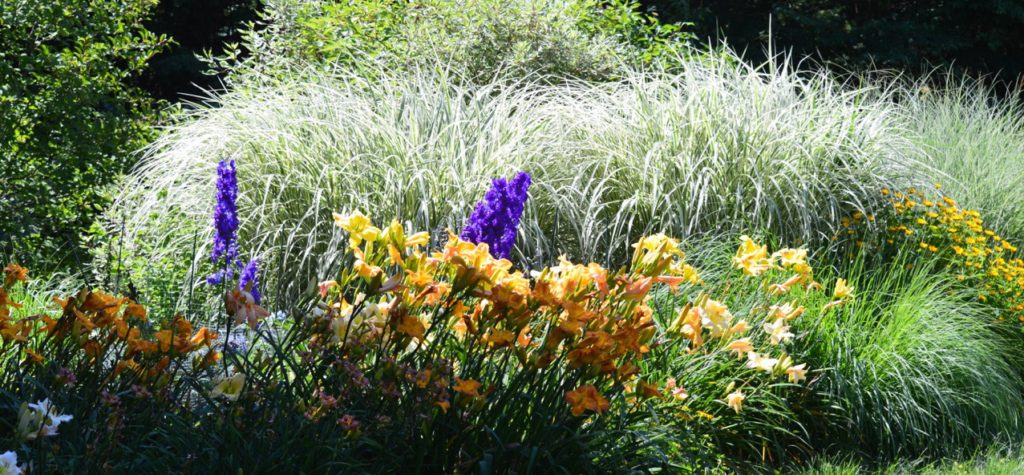
- Reduce lawn size, substituting flowers, shrubs and grasses providing a more diverse environment for the bees and birds. Mow the remaining lawn high (3-4 inches) to retain water and establish deeper root systems. Use an electric lawn mower.
- Plant native plants, shrubs, grasses and trees. Native plants serve as host plants fort native butterflies and insects. See New England Wild Flower Society for more resources. (www.newfs.org).
- Do not apply ANY pesticides, herbicides or fertilizers…unless they consist of well-proven safe materials. The major chemical manufacturers of lawn and garden products will not tell you about the danger of their products to pets, family, garden workers, butterflies, bees, water supplies and so on.
- Manage water. Water deeply, BUT NOT OFTEN to encourage roots to run deeper. Use a rain barrel to capture water from your roof and use it to water your garden.
- Feed the soil, not the plant. Use compost, leaf litter, and plant varieties to encourage the development of healthy soil.
- Provide habitat for bees, birds and butterflies. They need food (pollen), cover, places to rear young and water. Don’t cut down native plants in the fall, but leave them over winter to provide food and habitat. Mulch leaves and use them to improve the soil.
- Get children outside. Plant a garden to build an appreciation for where our food comes from (and plant something to share with others.)
- Plant a native-plant meadow. Buy only native plants or cultivars to support native insects and wildlife. Apply for National Wildlife Certification from the National Wildlife Federation and put up the sign to showcase your new meadow.
(Notes are based on tips from Meadowscaping for Biodiversity www.meadowmaking.org)
